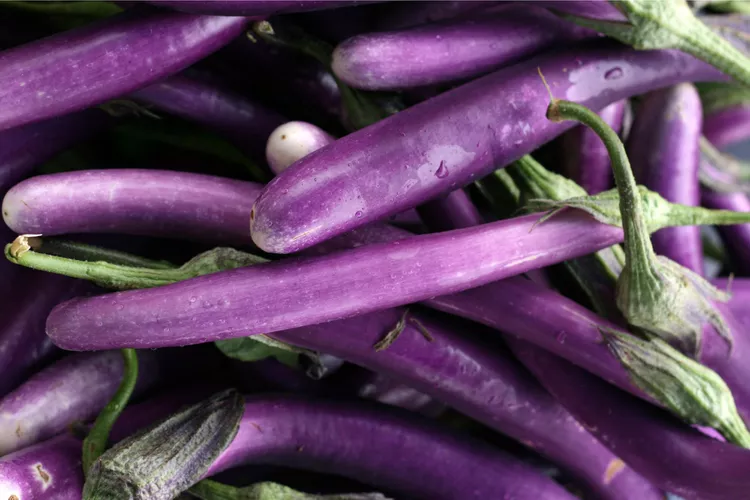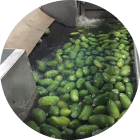Ingredients
| Nutrients | Calories: 25 Fiber: 3 g |
|---|---|
| Protein | 1 g |
| Vitamin | C, B-6 |
| Minerals | Folate: 5% Manganese: 10% Calcium: 9 mg Potassium: 229 mg Magnesium: 14 mg |
Benefits
Brinjal is packed with nutrients

Brinjal are high in anthocyanins, a pigment with antioxidant properties that can protect against cellular damage.
Brinjal may improve heart function and reduce LDL cholesterol and triglyceride levels, though human research is needed

Brinjal are high in fiber and polyphenols, both of which may help reduce blood sugar levels.

Brinjal is high in fiber but low in calories, both of which can help promote weight loss
We Export Brinjal Varieties

Chinese Brinjal
Chinese brinjal, popularly known as Burpless Brinjal or eggplant, is a variety of brinjal that is grown widely in China and India. They are highly valued due to their unique flavor and texture. Chinese brinjal is characterized by its round shape and a lack of the bitterness often found in other types of brinjal. It is mild in flavor and has a subtly sweet taste. Chinese brinjal is a great addition to many dishes. It can be grilled, fried, steamed, or sautéed and can be used as an accompaniment to main dishes, side dishes, or even as a standalone dish.

Indian brinjal
Indian brinjal,Aubergine Brinjal is one of the most versatile and widely used vegetables in Indian cuisine. Also known as Aubergine, it is a purple-coloured vegetable belonging to the Solanaceae family. Native to India, Brinjal is a bit bitter when raw, but its flavor intensifies when cooked. It is a key ingredient in dishes like Mattar Paneer, Bharta, Baingan Bhartha, and more. What makes brinjal unique is its rich amount of dietary fiber, magnesium, phosphorous, potassium, copper, vitamin K, and many other important vitamins and minerals, which makes it beneficial to the human body.

Graffiti Brinjal
Graffiti Brinjal is an genetically modified (GMO) version of traditional brinjal. This GMO brinjal contains genes from bacteria which produce toxins to protect the crop from insect pests. This technology in particular is known as Bt (Bacillus Thuringiensis) Brinjal and has been developed by USA food corporations such as Monsanto. Graffiti Brinjal is a hybrid variant of traditional brinjal, which is more resilient to insect pest damage. It contains a mixture of genes, which have been altered in order to be resistant to attack by certain species of insects.

Little Green Brinjal
Little Green Brinjal is an eggplant variety genetically modified to be resistant to the beetle found in some areas, specifically the tobacco cutworm. It was developed through genetic engineering techniques, which allow scientists to transfer a gene or genes from one organism to another so that the new organism will possess the desired trait from the donor organism. By doing so, Little Green Brinjal was created to naturally resist the beetle, reducing the need for excessive pesticide use. Additionally, the plant was further modified to retain a transgenic protein, which allows it to produce an enzyme that is toxic to the beetle, yet is not known to have an effect on humans or other animals. Furthermore, it is expected that more resistant .
Our Process
As a leading exporter of fresh and organically grown vegetables, we follow a strict packaging and shipping process to ensure items are delivered in top condition. Since vegetables are fragile and perishable in nature, our staff pack them carefully and also take care of temperature control measures so that they arrive at their destinations without getting damaged.












